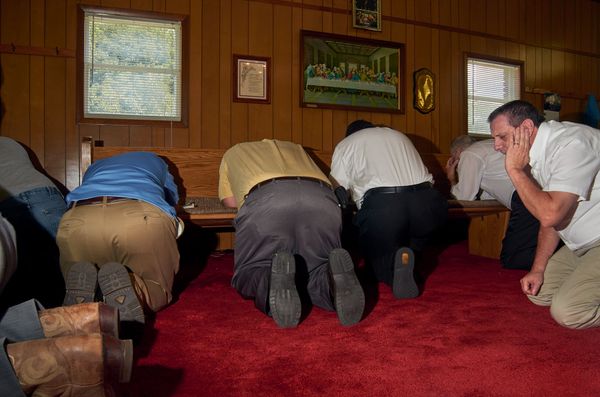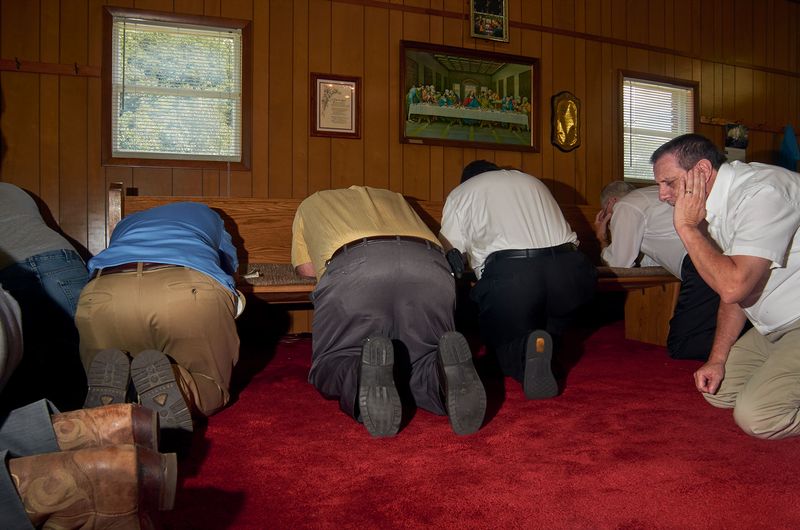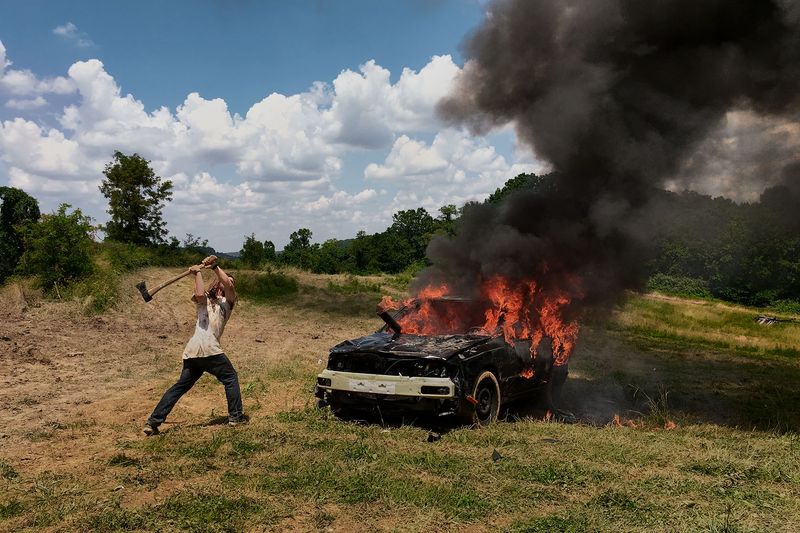Sunset over Appalachia
-
Published29 Sep 2022
-
Author
In As It Was Give(n) To Me, Stacy Kranitz mixes text, images, and self-portraits to examine how history, environment, and ideas of poverty have affected Appalachia, an economically deprived stretch of mountains that ranges over 13 states.
In her book about the American Underclass (titled White Trash), Nancy Isenberg writes how the history of America is written into its landscape. Before the idea of the United States being some kind of God-Given paradise for the white man to make his New Jerusalem, before the white man had even set foot in most of the United States, it was seen as a country filled with barren wastelands, a disease-ridden swampland that needed to be cleared to make it fit for habitation by worthy humans.
The people who did that clearing in places like Virginia, Carolina, and Kentucky; who drained the swamps, cut the forest, settled the land, were despised by the colony’s ruling classes. They cleared the land, but they were often seen as drunks, lazy, immoral, not fit to live on the land that once cleared, was appropriated by more powerful landowners. The people who had cleared the land (who couldn’t afford to buy it once cleared) were forced to move on, to find more land unpopulated by Europeans, to start the process of draining, and cutting, and clearing once more.
‘Shocking as it is for us to contemplate,’ writes Isenberg, ‘large numbers of early American colonists spent their entire lives in such dingy, nasty conditions… They walked around with open sores visible on their bodies; they had ghastly complexions as a result of poor diets; many were missing limbs, noses, palates, and teeth.’
That legacy of poverty continued into the 1960s when US president Lyndon Johnson launched his Great Society programmes. ‘Focussing on poor urban black communities and the mountain folk of Appalachia,’ writes Iserbergh, ‘Johnson’s War on Poverty was aimed at tackling the poor housing, the lack of education, and a landscape devastated by mining pollution.’ As Johnson proclaimed the virtues of the Great Society to the Appalachians, he also mocked them for what he saw as their backwardness.
His efforts at economic reform didn’t survive the years of trickle-down economics. Nothing trickled down to Appalachia. Today the landscape continues to be devastated, health statistics are appalling, and education and opportunity have become an ever-more-distant dream as the United States enters low-income-economy status.
‘An economic underclass, once marginal, is becoming the American mainstream,’ wrote Danielle Jackson earlier this month, ‘and it is unclear how traditional stereotypes of lower-income people will endure or shift when nearly half of Americans work in low-wage jobs.’
That is pertinent to Stacy Kranitz’s As It Was Give(n) To Me, a book that features the photographs Kranitz has made over the last 10 years in Appalachia, the mountain region of the United States that cuts across 13 states including Virginia, Kentucky, and Alabama. It’s best known for (and stereotyped by) mountain removal coal mining, rural poverty, and the movie Deliverance.
The book is organized into chapters titled Arrival, Exploration, Mutiny, Extraction, and Salvation, titles that mirror the region’s history and the problems besetting it. So you go from images of Appalachia as some kind of Arcadian paradise to images of residents sitting terrified as they receive free dental care from dentists volunteering their services for free. Bare-chested men sit on the porches of run-down housing, there are deserted towns, smoking chimneys, and devastated mountain tops.
The Appalachia shown is poor, it is run-down, and it does feature people with worn-out faces and cast-off closing. It also shows people jumping on trampolines, or bathing in pools, it shows people who are collected with their thoughts and themselves, it shows people who get drunk, who enjoy themselves.
There are images of visitors to Skateopia, high as kites, faces dripping with sweat and blood. People visit churches, they drape snakes around their necks, they wave confederate flags, and they go to strip clubs. It is a conflicted and contrary world that is depicted, as conflicted and contrary as contemporary America can care to be.
A counterpoint comes from the text; snippets of conversations or messages that have been taken from somewhere and laid into the book. There are messages of tolerance and kindness, of consideration for one’s fellow Appalachians. There are words that cut through the stereotypes of isolation and the hillbilly images, words that cut through the idea of the Appalachian backwoods being a total nest of Trump-supporting, Covid-deniers. People express their struggle to get off opioids, their difficulties with health care, their hatred of guns, their love for others, and their struggles.
An appendix features books, films, documentaries, music, and poetry on the region. And then we see another thread to the images. Stacy Kranitz herself appears in some of the pictures, dressed in a floor-length gown with mountains of coal rising in the background, standing with an Edenic river behind her, and in the final picture, she’s there, riding a horse, a bare-chested man sitting with her arms around her, his face nuzzled in the back of her neck as the sun sets of Appalachia.
--------------
As It Was Give(n) To Me
is published by twin palms publishers
May 2022
9 x 11.5 inches
225 four-color plates
304 pages
clothbound hardcover
foil-stamped front and back covers
$85.00
--------------
Stacy Kranitz was born in Kentucky and currently lives in the Appalachian Mountains of eastern Tennessee (unceded territories of the Cherokee, Yuchi and Shawnee peoples). Working within the documentary tradition, she makes photographs that acknowledge the limits of photographic representation. Her images do not tell the “truth” but are honest about their inherent shortcomings, and thus reclaim these failures (exoticism, ambiguity, fetishization) as sympathetic equivalents in order to more forcefully convey the complexity and instability of the lives, places, and moments they depict.
Colin Pantall is a photographer, writer and lecturer based in Bath, England. His latest book, Sofa Portraits, will be published in October. You can order it here. Follow him on Twitter and Instagram.










